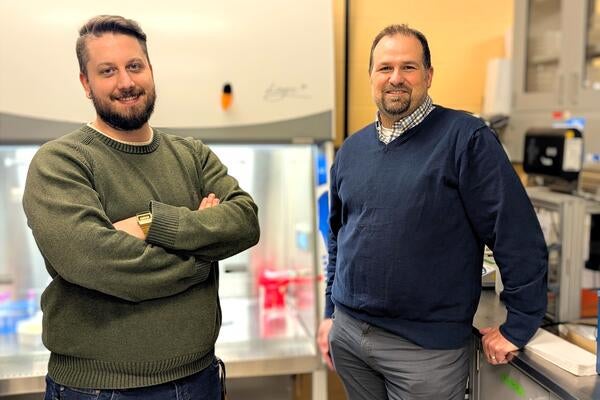
Engineers tap into good vibrations to power the Internet of Things
New material converts vibrations into electricity

New material converts vibrations into electricity
By Media RelationsIn a world hungry for clean energy, engineers have created a new material that converts the simple mechanical vibrations all around us into electricity to power sensors in everything from pacemakers to spacecraft.
The first of its kind and the product of a decade of work by researchers at the University of Waterloo and the University of Toronto, the novel generating system is compact, reliable, low-cost and very, very green.
“Our breakthrough will have a significant social and economic impact by reducing our reliance on non-renewable power sources,” said Asif Khan, a Waterloo researcher and co-author of a new study on the project. “We need these energy-generating materials more critically at this moment than at any other time in history.”
The system Khan and his colleagues developed is based on the piezoelectric effect, which generates an electrical current by applying pressure — mechanical vibrations are one example — to an appropriate substance.
The effect was discovered in 1880, and since then, a limited number of piezoelectric materials, such as quartz and Rochelle salts, have been used in technologies ranging from sonar and ultrasonic imaging to microwave devices.
The problem is that until now, traditional piezoelectric materials used in commercial devices have had limited capacity for generating electricity. They also often use lead, which Khan describes as “detrimental to the environment and human health.”
The researchers solved both problems.
They started by growing a large single crystal of a molecular metal-halide compound called edabco copper chloride using the Jahn-Teller effect, a well-known chemistry concept related to spontaneous geometrical distortion of a crystal field.
Khan said that highly piezoelectric material was then used to fabricate nanogenerators “with a record power density that can harvest tiny mechanical vibrations in any dynamic circumstances, from human motion to automotive vehicles” in a process requiring neither lead nor non-renewable energy.
The nanogenerator is tiny — 2.5 centimetres square and about the thickness of a business card — and could be conveniently used in countless situations. It has the potential to power sensors in a vast array of electronic devices, including billions needed for the Internet of Things — the burgeoning global network of objects embedded with sensors and software that connect and exchange data with other devices.
Dr. Dayan Ban, a researcher at the Waterloo Institute for Nanotechnology, said that in future, an aircraft’s vibrations could power its sensory monitoring systems, or a person’s heartbeat could keep their battery-free pacemaker running.
“Our new material has shown record-breaking performance,” said Ban, a professor of electrical and computer engineering. “It represents a new path forward in this field.”
The study, Large piezoelectric response in a Jahn-Teller distorted molecular metal halide, appears in the journal Nature Communications.

Read more
Here are the people and events behind some of this year’s most compelling Waterloo stories

Engineering master's student Nayeema Nonta (left), one of the three paper authors, and her supervisor, Dr. Sirisha Rambhatla, in a large server room with the computer power needed to develop their new LLM training technique. (University of Waterloo)
Read more
Waterloo researchers develop highly efficient AI training system that paves the way for cheaper, greener “intelligent partners”

Read more
Engineering researchers team up to tackle the plastics pollution problem with microbial innovation and engineering design
The University of Waterloo acknowledges that much of our work takes place on the traditional territory of the Neutral, Anishinaabeg, and Haudenosaunee peoples. Our main campus is situated on the Haldimand Tract, the land granted to the Six Nations that includes six miles on each side of the Grand River. Our active work toward reconciliation takes place across our campuses through research, learning, teaching, and community building, and is co-ordinated within the Office of Indigenous Relations.